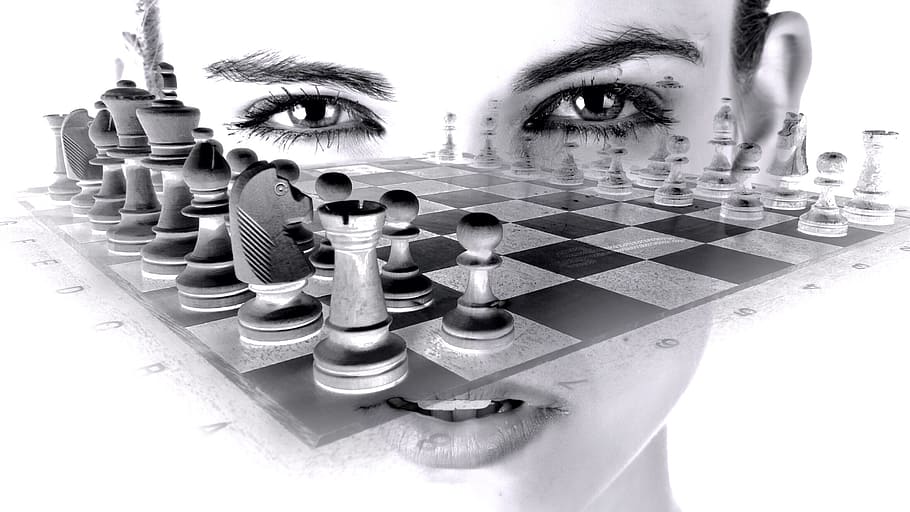Beauty is in the eye of the beholder
Perhaps the earliest recorded chess problems were by al-‘Adli who was reputedly the author of the first book about chess (or rather, an earlier but still recognizable form of the game) and lived in the 9th century CE. He is also said to have played it in the presence of one named, al-Mutawakkil, and therefore was not likely just or even primarily a composer of problems [1]. In the 21st century, however, composing original chess problems is no longer something that only humans can do autonomously. Chesthetica, a program I developed, has been doing so for years now with no end in sight. It composes, quite literally, like a machine. Also, it does not use any kind of machine learning but a totally different approach I call the ‘Digital Synaptic Neural Substrate’ or DSNS, for short. There is, in fact, no ‘learning’ going on at all despite having the word ‘neural’ in it (related books on the subject can be found here).
The feedback I have received over the years about these compositions from the general chess-playing community has been largely positive. However, among master or even grandmaster composers, less so. This is despite some of Chesthetica’s compositions being intriguing enough for publication in a chess problem magazine [2]. Perhaps the first ever to publish compositions composed entirely and autonomously by a computer program.
Personally, I lack the necessary experience (and frankly interest or inclination) to be able to appreciate all the intricacies of traditional chess problems, which apparently put them on a ‘higher aesthetic level’ than anything Chesthetica has produced so far. I suppose the same could be said for other artificial intelligence (AI) systems — even with far more resources behind them — that generate things like paintings and music. The best human painters and musicians are still ‘better’. Perhaps they always will be as far as humans are concerned.

Regardless, in this article I wanted to share with readers what the general global chess community, not just master players and composers, apparently find appealing when it comes to chess problems. For that purpose, I exported the ‘post data’ from the Chesthetica Facebook page between May 26th and November 21st 2019 (Facebook only allows up to the last 180 days). This showed various statistics regarding all the chess problems published there within that period. Pundits may prefer to just call them constructs, a type of chess problem, since the expression of themes (in particular) is not a critical component. I had been ‘sharing’ these problems composed by Chesthetica to a selection of large chess problem/puzzle communities that are also on Facebook. Each post there can potentially ‘reach’ tens of thousands of people. None of these posts were ever ‘boosted’ by me, by the way (e.g. with money to Facebook or requested assistance from anyone).
Since every few weeks Chesthetica composes far too many problems for any one person to go through in detail individually, for the purpose of online publication (and with the help of more filtering tools I have programmed into Chesthetica), I am able to choose some and reject others based on certain criteria. The process undoubtedly means I would have rejected some problems that others would likely have found appealing and this cannot be helped. To be fair, some problems are also just ‘bad’, ‘weak’, too weird or make no sense in my view and rejected for those reasons too. The information of primary interest to me in the exported data was what Facebook calls ‘lifetime engaged users’ which they define as, “the number of unique people who engaged in certain ways with your page post, for example by commenting on, liking, sharing, or clicking upon particular elements of the post.”
For the given period mentioned earlier there were 87 posts that included mates in 3, 4, 5, and study-like constructs. Even the main line of the solution was selected by Chesthetica. After ranking them in terms of ‘lifetime engaged users’, I could contrast the top 5 compositions by Chesthetica versus the bottom 5 which presumably reflects what most people like (and dislike) about these compositions. Here they are (with the Chesthetica version number that produced them):
Tip: You can play against each diagram to checkmate!
Top 5 Compositions
Bottom 5 Compositions
It should be noted that aesthetics is a significant but not the only aspect that attracts people to chess problems. My experience working in this area for over a decade (with chess as the primary domain of investigation) suggests that, rather obviously, different people tend to like different things. Even so, there are still clearly ‘bad’ compositions and clearly ‘good’ ones that most of us (i.e. with a working knowledge of the game or better) would generally agree on if we are not told in advance what to look for. Perhaps in a thousand years some of Chesthetica’s compositions would also have survived and be marvelled upon, if not for their aesthetics then maybe due to the fact that a computer program ‘back then’ could compose original chess problems autonomously at all.
Having said all that, do you, dear reader, agree with the ranking of a sampling of the general global chess community as shown above or would you arrange the compositions in a different order?
Let us know in the comments!
Want to learn more?
References
- Sezgin, F. (Editor) (1986). Book on Chess (Kitāb al-Shatranj): Selected Texts from al-‘Adli, Abū Bakr al-Sūlī and Others; Series C, Volume 34, Institute for the History of Arabic-Islamic Science at the Johann Wolfgang Goethe University, Frankfurt am Main (Reproduced from MS 560, Lala Ismail Collection, Sūleymaniye Library, Istanbul).
- Enemark, B. (2015). Computer-genererede Problemer, Problemskak, Denmark, Vol. 4, No. 31, July, pp. 1, 3-6. ISSN 1903-0169.
Solutions
The top 5 and bottom 5 problems shown above (click or tap a game in the list to switch)
























